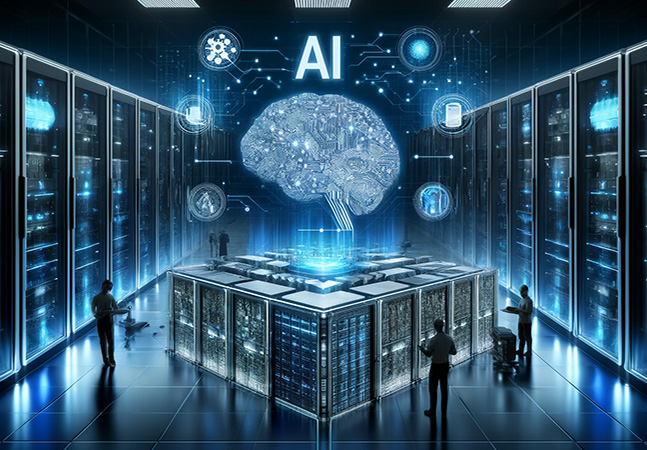
"You can accelerate innovation and deliver tangible business value with DeepSeek on AWS without having to manage infrastructure complexities."

In today's rapidly evolving cybersecurity landscape, IT infrastructure is under constant siege from increasingly sophisticated threats. Ransomware, insider attacks, and supply chain vulnerabilities have escalated in both frequency and impact, leaving organizations scrambling to fortify their defenses. At the same time, the shift to hybrid work, cloud adoption, and AI-driven threats can make some traditional security models obsolete, demanding a more proactive and adaptive approach.

One interesting trend in a new report from Wiz about AI in the cloud is the disruption caused by the arrival of a DeepSeek model that caused an uptick in self-hosted models, industry backlash and usage restrictions.

With cybersecurity affecting everyone, a multicloud environment might be of special concern because of all the moving parts and associated system and their connections, possibly introducing new attack vectors or specialized attack strategies, so front-line expert Chris Spinks provides action-item best practices.

"Don't think your company's too small to be cyberattacked, because you're not," says disaster recovery expert Joey D'Antoni. "It just means they haven't decided to try you yet."

Veeam Software, a data resilience specialist, announced the enhancement of its disaster recovery capabilities for Microsoft Hyper-V environments through the introduction of orchestration features.

After Microsoft seized on its OpenAI partnership to establish a solid leadership position in the cloud AI space, and Google quickly declared a "code red" emergency to catch up with first Bard and then Gemini, Amazon wasn't making as much news in AI. That has changed.

Threat actors are changing tactics as they collect less money from ransomware payoffs, according to a new report from Chainalysis, a blockchain analytics firm.

Google opened up access to Gemini 2.0, a significant update to its flagship AI, targeting enterprise users and developers with enhanced multimodal capabilities and improved performance.

GenAI dominates the new Nutanix Cloud Index, the latest in a years-long series of surveys the hybrid multicloud specialist publishes to measure global enterprise progress with cloud adoption. The 2025 report published today reveals that GenAI is changing organizations' priorities, with security and privacy being a primary concern.

The Cloud Security Alliance has weighed in on the debut of revolutionary and controversial DeepSeek AI with strategic implications and action items just as a report was published on data leakage from the platform.

Microsoft, Amazon and Google have all embraced new open-source DeepSeek AI technology from a Chinese company, despite its usage being banned by many organizations due to concerns about data security, privacy, compliance, and national security risks.

The new "2025 State of the Cloud" report from multicloud specialist Rackspace defines and explains the characteristics of a "cloud leader."

Post-acquisition defections have been trumpeted by benefactors, with the latest being Nutanix announcing that Evalueserve, a global research and analytics firm, has chosen Nutanix to replace its VMware-based virtualization infrastructure.

Tech organizations and companies blasted this week's AI moves by the Biden administration, with Nvidia slamming the U.S. president's actions and comparing current government policies unfavorably with those of president-elect Donald Trump.

A new survey-based report from cloud security specialist Netskope explores cybersecurity threats, including the dangers of GenAI and the related apps that are most often blocked from employee use by organizations.

"The term 'metaverse' has weathered a significant hype cycle, where inconsistent definitions led to confusion and premature declarations of its demise" -- Metaverse Standards Forum

The "Responsible AI" movement seeks to help organizations build and maintain trust with users, stakeholders and society at large -- and maybe even avoid those pesky "AI-Kills-Humanity" scenarios -- but a new report indicates it just makes good business sense, too.

Five online systems generate surprisingly similar predictions around multimodal, agents and the usual suspects.

Data security specialist Rubrik is speeding up the threat hunting process in its software by allowing for quicker recoveries in the familiar backup & recovery process.